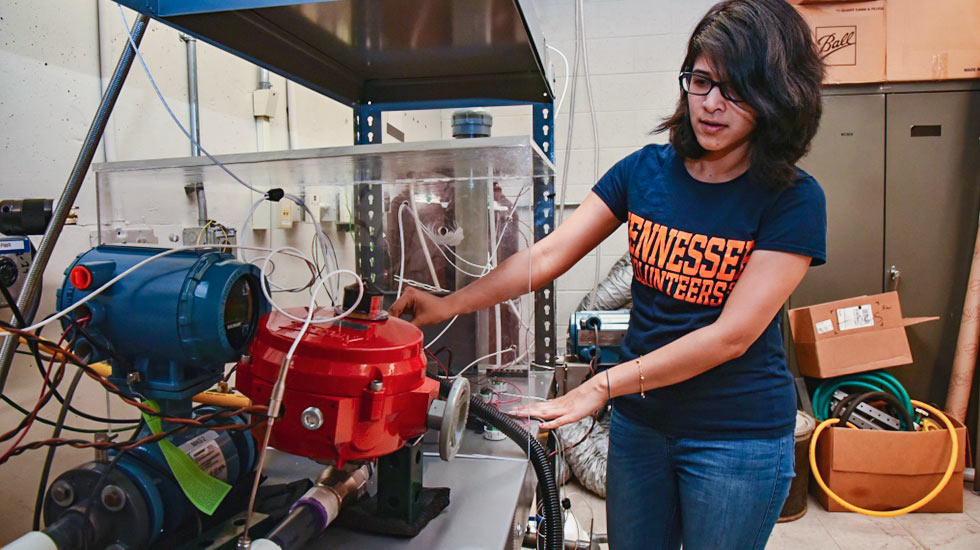Research in nuclear instrumentation & control (I&C), reliability, and safety advances the economic competitiveness of nuclear power facilities while maintaining safety standards and supporting licensability of advanced concepts of reactor design and reactor operation. The current fleet of light water reactors are challenged in the US by inexpensive natural gas and the deep penetration of intermittent renewable energy sources in the electrical grid. Deployment and dispatch of nuclear power as a carbon-free energy source rests on the economic viability of these plants in a variety of energy markets. R&D to improve the economic outlook for both the current and future fleets of nuclear power plants focuses on improvements to plant performance, efficiency, and automation.
Research Themes
Digital Instrumentation and Control
The transition to digital instrumentation and control (DI&C) in current nuclear power facilities enables new possibilities for enhanced process and system monitoring, advanced control strategies, and greater operational flexibility. Future advanced reactor designs, with self-regulation and load-following features, require reliable instrumentation to enable near autonomous control of future nuclear power plants. However, DI&C introduces new challenges in embedded intelligence, qualification, and cybersecurity. Researchers at UTNE are developing next generation tools to support the licensability, deployability, and regulatory acceptance of DI&C systems.
Prognostics and Health Management
Prognostics and health management (PHM) technologies evaluate and trend the evolving condition of equipment and processes to extend the safe and reliable operation of nuclear facilities. Researchers at UTNE apply data analytics and machine learning to a variety of process, plant, and performance data to characterize, monitor, and predict process and equipment health and integrate these results into risk assessment, robust decision making, and advanced controls. PHM is the key enabling technology to transition from costly periodic inspection and maintenance to condition-based operations and maintenance.
Nuclear System Thermal Performance
The long history of efficient and reliable commercial nuclear facility operation in the US relies on a fundamental understanding of thermal fluid behavior and complex simulation codes. Nuclear thermal performance researchers at UTNE combine experimentation, computation, and data analysis to support validation of simulation codes for nuclear system design and performance assessment. Recent work has developed flow measurement methods for opaque fluids, including Ultrasonic Doppler Particle Image Velocimetry for mercury flows, and Positron Emitting Particle Tracking (PEPT) for opaque flow and flow in complex geometries.
Reactor Safety and Licensing
UT reactor safety and licensing research lies at the nexus of nuclear thermal hydraulics, reactor physics, and fuel safety. This includes nominal nuclear reactor operation, anticipated transients, and accident events. Examples include the study of reactor performance and safety characteristics of Accident Tolerant Fuel, licensing of advanced reactor concepts, and other topics.
Facilities
Component Accelerated Testing Laboratory
Research in prognostics and health management focuses on data-driven algorithms and approaches for equipment condition assessment and extrapolation. High-value, safety-critical systems are not allowed to run to failure to provide the necessary data for algorithm development and testing. Instead, testbeds are used to generate representative data under accelerated degradation conditions.
Current testbeds investigate rotating equipment (pumps, motors, and bearings), heat exchanger fouling, and small-scale electronics. Data from these testbeds are used to develop and demonstrate equipment condition indicators, prognostic models, enhanced risk assessment, and prognostic-informed control systems.
Reactor Dynamics Modeling and Simulation
Current research efforts at the University of Tennessee have led to a dynamic modeling approach for molten salt reactors based on previous work at ORNL. Experimental data published during the operation of the Molten Salt Reactor Experiment (MSRE) are used to validate lumped parameter models. These models, which characterize the reactor’s dynamic behavior, are nonlinear and represent changes in mass, energy, and temperature in all parts of the power plant.
The development of the Molten Salt Demonstration Reactor (MSDR) includes a once-through steam generator and a complete balance of plant (BOP) system. Reactivity feedback effects due to changes in temperature and neutron poison concentrations are integrated. The models can be used to study both time and frequency domain responses to perturbations caused during normal operation, and during anomalies resulting from failure of equipment/instrumentation. The models are also used to develop the strategy of near-autonomous operation of MSRs.
Research Flow Loops
Several water-based flow loops have been constructed to support investigation of instrumentation, measurement, and control for current and future reactor systems. These flow loops are designed to mimic key aspects of nuclear power facilities and provide a unique proving ground for complex I&C research in a low-risk environment.
Several natural- and forced-circulation flow loops are used to test and demonstrate flow measurement technologies, including inferential flow characterization, ultrasonic flow measurement, and transit-time flow meters. Flow loops are also used to demonstrate advanced concepts of operation and control strategies, such as load following, model predictive control, and fault tolerant control. Integration with DI&C systems also supports cybersecurity research to demonstrate digital system resilience and intrusion detection.
